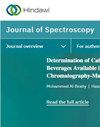Reduction of Background Fluorescence from Impurities in Protein Samples for Raman Spectroscopy
IF 2.1
4区 化学
Q4 BIOCHEMICAL RESEARCH METHODS
引用次数: 1
Abstract
Background fluorescence remains the biggest challenge in Raman spectroscopy because of the consequent curvature of the baseline and the degradation of the signal-to-noise ratio of the Raman signal. While the concentrations of the fluorophore impurities are usually too low to be detected by other analytical methods, they are often sufficient to prevent Raman data collection. Among the different existing methods to remove the fluorescence signal, photobleaching remains the most popular due to its simplicity. However, using the spectrometer laser to photobleach is far from optimal. Most commercially available instruments have little or no choice of wavelength, and their output powers are in many cases not suitable for highly fluorescent samples such as those from biological systems (e.g., proteins). In this article, we assess practical aspects of photobleaching such as the apparent reversibility of the process and the effect of convection currents due to what we speculate to be temperature gradients across the bulk of the solution. We also introduce an affordable custom made external photobleaching unit with a choice of excitation wavelength and demonstrate its viability with a highly fluorescent bovine serum albumin protein solution, which had proved most challenging for Raman spectroscopy as it contained ∼10% w/w impurities.拉曼光谱中蛋白质样品中杂质背景荧光的还原
背景荧光仍然是拉曼光谱中最大的挑战,因为随之而来的基线曲率和拉曼信号的信噪比下降。虽然荧光团杂质的浓度通常太低,无法通过其他分析方法检测到,但它们往往足以阻止拉曼数据的收集。在现有的各种去除荧光信号的方法中,光漂白因其简单而最受欢迎。然而,使用光谱仪激光进行光漂白远非最佳选择。大多数市售仪器很少或没有波长选择,其输出功率在许多情况下不适合高荧光样品,如来自生物系统的样品(如蛋白质)。在本文中,我们评估了光漂白的实际方面,如过程的明显可逆性和对流的影响,因为我们推测是整个溶液的温度梯度。我们还介绍了一种价格合理的定制外部光漂白装置,可选择激发波长,并在高荧光牛血清白蛋白溶液中证明了其可行性,该溶液已被证明对拉曼光谱最具挑战性,因为它含有约10% w/w的杂质。
本文章由计算机程序翻译,如有差异,请以英文原文为准。
求助全文
约1分钟内获得全文
求助全文
来源期刊

Journal of Spectroscopy
BIOCHEMICAL RESEARCH METHODS-SPECTROSCOPY
CiteScore
3.00
自引率
0.00%
发文量
37
审稿时长
15 weeks
期刊介绍:
Journal of Spectroscopy (formerly titled Spectroscopy: An International Journal) is a peer-reviewed, open access journal that publishes original research articles as well as review articles in all areas of spectroscopy.
 求助内容:
求助内容: 应助结果提醒方式:
应助结果提醒方式:


